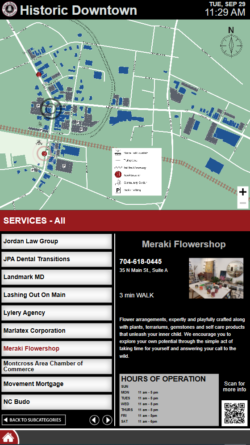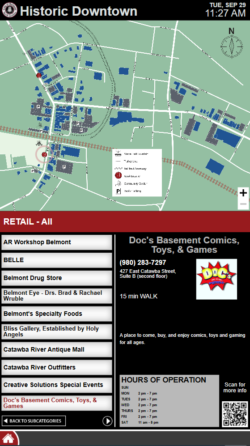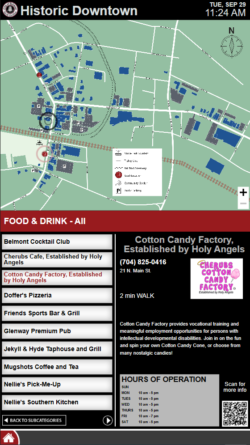QR Codes + Digital Signage = WINNING
One of digital signage software’s greatest strengths is its ability to interact and integrate with different types of technology. Instead of becoming stale, irrelevant, and less effective, it can morph and evolve by necessity, need, or preference into a tool that works the way both the back-end person and the end user need it to function. Partnering with QR codes is not new to the world of digital signage, as both tools have meshed well in the past to serve company objectives and smooth the way for information sharing to the end user. Today’s marketplace, however, has ushered in an even better environment for QR codes and digital signage to amplify an organization’s success in a variety of ways.
First let’s talk about QR codes, what they are, and how they work.
How QR Codes Are Used
QR codes are not new. They’ve been used for years in many different
capacities by a variety of industries. A QR code is a piece of
technology that smart devices “read” to learn where they need to take
their user. They work similarly to a barcode you would see on your
cereal box or shampoo bottle. You might see them on a business card, an
advertisement, a sign, or dozens of other places. They may contain links
to a website or landing page, an email address, or a discount or
promotion offer. Users can download one of many QR code reader apps to
be able to use QR codes.
Anyone with a smartphone can quickly scan a QR code to accomplish different tasks, such as:
- Access wayfinding maps via link downloads
- Connect with menus, spa services, or program times
- Use it to interactively engage
While QR codes have been around and widely used for many years, a certain pandemic has breathed new life into the importance of this piece of technology to make it as hot as ever. COVID-19.
QR Codes in the Age of COVID-19
The coronavirus pandemic has made touching public surfaces unappealing and maybe even dangerous. Concerns about touching surfaces that may have a pathogen living on them, though things like handrails, door handles and plenty of other surfaces present equal or greater risks. Being able to get information without touching screens, kiosks, or other public surfaces has never been more important to the public than it is now.
QR codes offer touchless solutions that are critical to keep everyone safe and hinder the virus from spreading. By eliminating the need to physically engage with touch-interactive digital signage, QR codes decrease the risk of going back to doing normal things like traveling to work, using public transportation, and shopping for groceries. Being able to simply scan a QR code, customers transfer control of the experience to their phones to browse or interact with content as they normally would, eliminating the need for physical contact.
Using QR Codes with Digital Signage Software
Digital signage software and QR codes are an obvious marriage, especially during the COVID-19 crisis. Businesses who already use digital signage software and those who are thinking about investing in the technology can benefit from also incorporating QR codes.
Some examples of how QR codes and digital signage software work together to successfully convey messages while decreasing the need for users to touch public surfaces are:
- Access restaurant menus. End-users can simple scan a QR code and receive the restaurant’s menu on their mobile device – no internet connection required, no app to download, and no printed menus.
- Tap into an attraction’s (zoo, museum, or amusement park) map for wayfinding instead of clustering around the large physical maps with other patrons.
- Give customers the ability to get promotions they see on the digital signage screen directly to the phones in the form of a scannable coupon.
- Offer contests for either customers or employees to participate by scanning a QR code. Announce the winner on the digital signage screen to build excitement.
- Doctor’s and dentist’s offices can give each patient a QR code to scan that takes them to a billing page. They can pay their bill without needing to stand in line in a crowded waiting room.
Businesses need to embrace technology and offer their employees and customers a safe way to physically engage as cities open up and we begin returning to work, school, restaurants, and other public spaces. There are a plethora of ways to marry QR codes and digital signage software to accomplish the company goals, while keeping our customers, patrons, patients, and employees safe and healthy. As the old saying goes, “necessity is the mother of invention” and this rings true now. With COVID-19 requiring a different manner of going about our daily tasks, there will undoubtedly be new and creative ways business leaders will think of to use these two tools together to achieve their initiatives.


